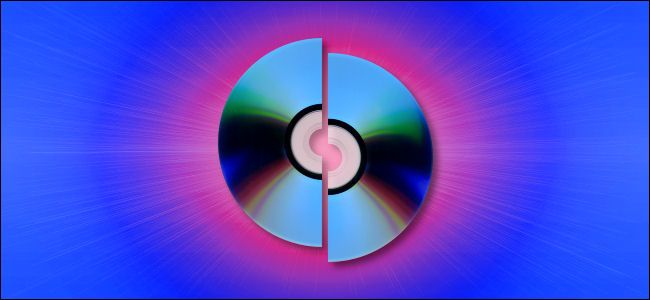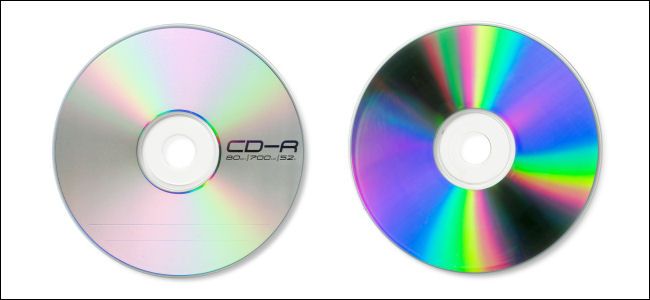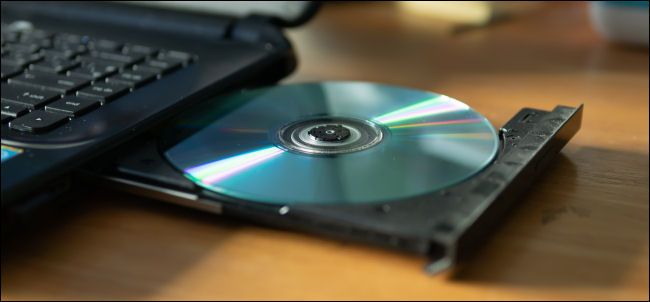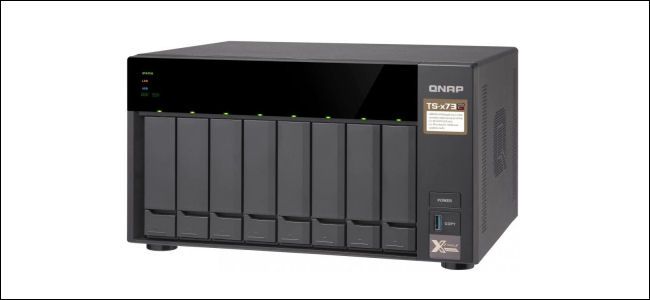Quick Links
If you used a computer between 1997 and 2005, you probably burned valuable data to at least one recordable CD (CD-R) or DVD-R. Unfortunately, these have a limited lifespan, and many have already become unreadable. That's why it's important to back up your recordable discs before it's too late---here's how to do it.
The Problem: Optical Disc Data Rots
CD-Rs and DVD-Rs store data on a layer of dye that is melted by the laser when the data is written. This dye layer isn't completely stable and can chemically break down over time, causing data loss. Also, the reflective layer on the top of the disc can oxidize, making the data difficult to read.
As a result, many CD-R and DVD-Rs burned in the late '90s and early '00s are now unreadable in modern optical disc drives. And for those that remain, the clock is ticking.
Estimates on the lifespan of CD- and DVD-Rs vary wildly, from between two and 100 years. In 2004, the U.S. Library of Congress sponsored a study that estimated the shelf life of recordable discs available at that time. It simulated the aging of CD- and DVD-Rs stored in perfect environmental conditions (that is, a room temperature of 50 percent humidity with no sunlight, and no rough handling).
The study concluded that most recordable discs stored in ideal conditions would last at least 30 years, but the results varied wildly by brand. However, it also stated that "discs exposed to more severe conditions of temperature and humidity would be expected to experience a shorter life."
So, if you store your CD- or DVD-Rs in a hot attic, you might find a higher portion of them have gone bad. From our anecdotal experience, if you have a batch of 30 vintage consumer-grade CD-Rs, you might expect a few of them to be unreadable. However, it depends on the quality of the disc, the type of dye used, the speed at which they were recorded, and how they were stored.
In 2010, the Canadian Conservation Institute published a detailed analysis of CD-R and DVD-R longevity that broke down estimated lifespans based on the dye and reflective layer composition. Like the Library of Congress report, the estimates varied wildly, from between five and 100 years, depending on disc composition. Unfortunately, the 100-year-minimum lifespan estimate only applies to expensive, high-end gold-backed CD-Rs that very few people used.
Even under ideal conditions, there's still cause for alarm. Even if a consumer-quality recordable disc has been stored in the perfect place, it might last (on average) about 30 years. Many recordable discs are already 15-25 years old, which means it's time to back them up now.
How to Back Up CD-Rs and DVD-Rs
To back up your old CD-Rs or DVD-Rs, you'll need a computer and a compatible CD or DVD optical drive to read the discs. Some people have had more success using older drives, claiming they tend to read older discs better than modern ones. This is anecdotal evidence, though.
Plus, older drives can be hard to get, unless you find one on eBay. If you decide to look for an older model, focus on the big-name brands. Sony, for example, was known for making high-quality drives. Of course, whether a vintage drive will work with a modern computer is another issue, entirely.
If you'd like to try a newer drive to read your discs, you can easily purchase one online. Most new optical drives should work just fine, as long as a CD- or DVD-R hasn't begun to degrade.
We recommend the following drives:
- For Windows PCs: A brand-name optical USB drive, like this well-reviewed one by Dell would be a good bet.
- For Macs: A good bet would be the Apple USB SuperDrive.
There are several ways in which you can copy the data from your CD- and DVD-Rs.
Option 1: Copy the Data Directly
If your PC or Mac recognizes the data on your CD- and DVD-Rs, the easiest way to back it up is to just manually copy the files over to your hard drive or SSD. To do this, just place the CD- or DVD-R in the optical media drive, and then open it on your computer.
It's best to do this with some kind of organizational structure if you're backing up a lot of discs. For example, you could create a separate folder for the contents of each disc. Name the folder something that will identify its contents, such as "CD-R - Photos from Tom's 2002 Wedding."
Option 2: Create Disk Images
Sometimes, a CD-R or DVD-R might be from a platform you don't use anymore, and you might not be able to read it properly. For example, say you burned a CD-R for a game console development kit, but Windows can't read it. In cases like those, consider making a disk image of the disc, instead.
A disk image captures the entire structure of an optical disc, including all the file data and the file system (if there is one), in a way that can be replicated later on another disc, if necessary. Good utilities for making disk images include WinImage for Windows and macOS's built-in Disk Utility app.
Back Up Your Optical Disc Backups
All consumer-grade digital storage media has a finite lifespan. It's only a matter of time before plastics chemically break down, metals oxidize, or magnetic signals fade. This means digital preservation takes active maintenance.
So, after you're done backing up your CD- or DVD-Rs, make sure the data you just copied over will be backed up continuously in the future. You can do this via a cloud backup, an external disk or NAS drive, and more.
One of the best ways to preserve your data at home is to keep your files on redundant storage (such as a RAID array). Then, just keep migrating the data onto new hardware, as necessary (all drives wear out eventually) and onto new platforms as they emerge.
What If I Find a Bad Disc?
If you're backing up CD-Rs or DVD-Rs, and find a disc that can't be read or has errors, your best bet is to copy as much data as you can, and then try to the disc on a different optical drive. If the second drive fails, try a third.
Sometimes, CD- and DVD-Rs were burned at high speeds with high error rates that were normally fixed on the fly by error-correcting code. This can make it more difficult for modern optical disc drives to read them, so try them on an older drive, if possible.
There's also some software that claims to aid in the recovery of data from optical media, such as IsoBuster (for Windows.) If that doesn't work, though, you might just have to call it a loss and hope you saved the data elsewhere.
If the data is incredibly important and irreplaceable, you can hire a forensic data recovery service to extract whatever's left of it for you. Unfortunately, finding a reliable data recovery service isn't easy, so you'll have to do some research. Happy digging!




